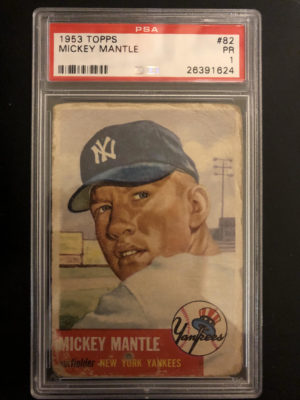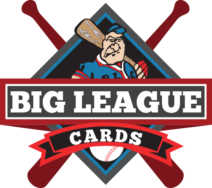Inside The Pack: Should I Grade My Card?
One of the most common questions I hear from collector friends is, “Should I grade this card?” The answer to this question is almost never a simple yes or no. There are many factors that would go into my suggesting to someone that they get their card graded by a third party authenticator like PSA, BGS, or SGC. Here are some reasons you should get your card graded.
To increase value
Deciding to get a card graded on this criteria alone requires some research on your part. Many people assume that getting a card graded automatically adds value to the card. It doesn’t. First, consider that your grading fee could range anywhere from $8 to $20, depending on the type of card you’re submitting and the way it’s submitted to the grading company. Right off the bat, you’re adding an extra cost to the card. Additionally, low grades could actually lower the value of a card. A modern card that gets a grade of 8.5, for example, will almost certainly be worth less than the raw card was. The same goes for many vintage cards with a low grade.

Before getting a card graded to increase its value, you need to try and determine what grade your card will get. Do this by very critically looking at the centering, corners, surface, and edges of the card. Use a magnifier in good light. Ask a non-collector what he or she thinks about the card, because sometimes they may see a flaw you as a collector are blind to. Once you determine the grade you think your card will get, go on ebay and look at that card in that grade. Does yours look similar? Better? Worse? Check sold prices to see what that grade of card sells for. Also check what 1 whole grade lower sells for (just in case), and then look at what the raw card sells for. Does the risk of a lower grade justify the upside of the value if you get a higher grade?
To determine or establish authenticity
This reason, of course, is mostly applicable to high dollar vintage cards. If you have a Babe Ruth or Lou Gehrig card of any kind, for example, and you don’t know with 100% certainty that it’s real, then grading is useful to determine authenticity, even if the card is not given a numerical grade and just declared to be “authentic”. This goes back to the first point of increasing value — the market for unauthenticated high dollar vintage cards is very small because of the number of fakes. Even if you do know with 100% certainty that your card is real, establishing authenticity will help increase its value if you plan to sell it. For example, if you yourself pulled a Fleer Michael Jordan rookie card, you know for sure that it’s real, but no potential buyers know that, nor do they have reason to believe your story. Even if as a kid you put that card in the washing machine and fed it to your dog, getting a third party to say it’s the real deal makes it more desirable.
To protect the card
Many people get cards graded not because they want to sell them, but because they want to protect them. Being encased in a hard plastic shell keeps the corners safe and protects the card from creasing. For high value cards in your personal collection, grading is a great option to make sure your card doesn’t get damaged in any way.
Because you like graded cards
Grading adds an additional layer to collecting. Some folks like only raw ungraded cards; others collect only graded cards. PSA has a “registry” feature in which collectors collect all the cards in a certain list (i.e., Hall of Fame rookies, or Robin Yount Topps basic set) and essentially compete to have a higher overall grade. Some collectors just like the way graded cards look when displayed, and there are custom-made display cases for PSA and BGS graded cards.
Next week, I’ll discuss some differences between the three major grading companies.




